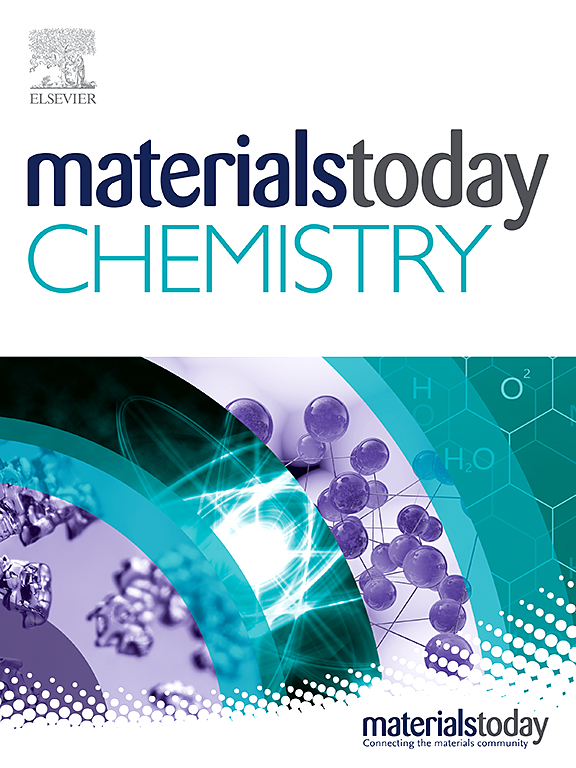NiFe2O4 magnetic nanoparticles supported on MIL-101(Fe) as bimetallic adsorbent for boosted capture ability toward levofloxacin
IF 6.7
2区 化学
Q1 CHEMISTRY, MULTIDISCIPLINARY
引用次数: 0
Abstract
Levofloxacin (LVX) capture with microcrystalline particles of monometallic metal-organic frameworks (MOFs) is definitely restricted and challenged by its difficulties in solid-liquid separation and enhanced of adsorption capacity issues. Meanwhile, the development of magnetic MOFs with excellent adsorption capabilities and outstanding recyclability is crucial. Herein, a novel magnetic Fe/Ni bimetal MOFs composite (MIL-101(Fe)@NiFeO, MNFO) for LVX capture has been effectively fabricated for LVX capture, utilizing MIL-101(Fe) as the primary adsorbent and NiFeO nanoparticles as the magnetic element. Attributed to the synergistic ability of bimetal ions (Fe and Ni), MNFO exhibits a significant adsorption capacity (335 mg/g) and rapid adsorption rate (10 min) towards LVX. The adsorption capacity indicates an increasing-then-decreasing trend with an increase of the pH values. Additionally, the adsorption data are well fitted by the Freundlich and pseudo-second-order kinetic models. Thermodynamic studies indicated that the adsorption process was spontaneous and endothermic. In addition, the adsorbent demonstrated excellent reusability, as it could be readily recovered from the liquid phase through the magnetic properties of NiFeO. Remarkably, it retained approximately 90 % of its adsorption capacity of the uptakes after 5 cycles. This study offers a innovative approach to the development of highly efficient adsorbents for capturing LVX from water.以 MIL-101(Fe)为支撑的 NiFe2O4 磁性纳米颗粒作为双金属吸附剂,提高对左氧氟沙星的捕获能力
利用单金属金属有机框架(MOFs)的微晶颗粒捕获左氧氟沙星(LVX)肯定会受到固液分离困难和吸附能力增强问题的限制和挑战。与此同时,开发具有优异吸附能力和出色可回收性的磁性 MOFs 也至关重要。本文以 MIL-101(Fe)为主要吸附剂,以纳米 NiFeO 粒子为磁性元素,有效地制备了一种新型的用于捕集 LVX 的磁性铁/镍双金属 MOFs 复合材料(MIL-101(Fe)@NiFeO,MNFO)。由于双金属离子(铁和镍)的协同作用,MNFO 对 LVX 具有显著的吸附容量(335 毫克/克)和快速的吸附速率(10 分钟)。随着 pH 值的增加,吸附容量呈先增后减的趋势。此外,吸附数据与 Freundlich 和伪二阶动力学模型拟合良好。热力学研究表明,吸附过程是自发和内热的。此外,这种吸附剂还具有极佳的重复使用性,因为它可以通过镍铁氧体的磁性很容易地从液相中回收。值得注意的是,该吸附剂在 5 次循环后仍能保持约 90% 的吸附能力。这项研究为开发从水中捕获 LVX 的高效吸附剂提供了一种创新方法。
本文章由计算机程序翻译,如有差异,请以英文原文为准。
求助全文
约1分钟内获得全文
求助全文
来源期刊

Materials Today Chemistry
Multiple-
CiteScore
8.90
自引率
6.80%
发文量
596
审稿时长
33 days
期刊介绍:
Materials Today Chemistry is a multi-disciplinary journal dedicated to all facets of materials chemistry.
This field represents one of the fastest-growing areas of science, involving the application of chemistry-based techniques to the study of materials. It encompasses materials synthesis and behavior, as well as the intricate relationships between material structure and properties at the atomic and molecular scale. Materials Today Chemistry serves as a high-impact platform for discussing research that propels the field forward through groundbreaking discoveries and innovative techniques.
 求助内容:
求助内容: 应助结果提醒方式:
应助结果提醒方式:


